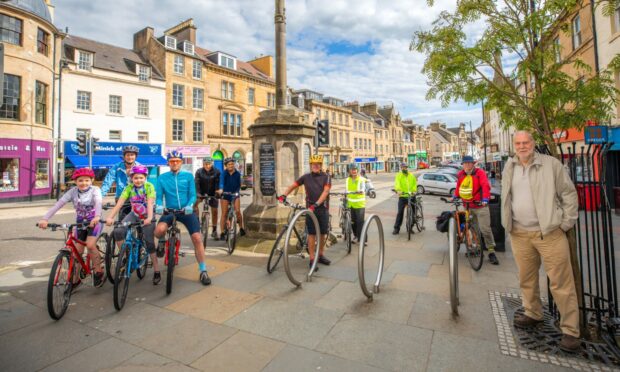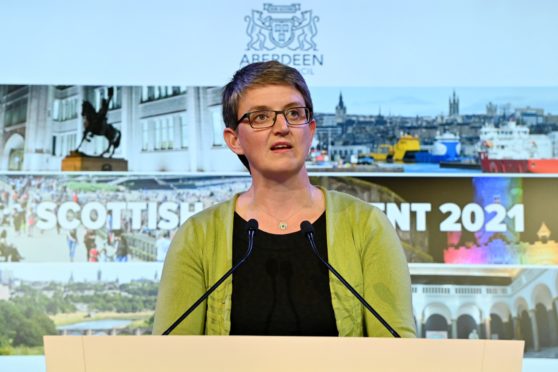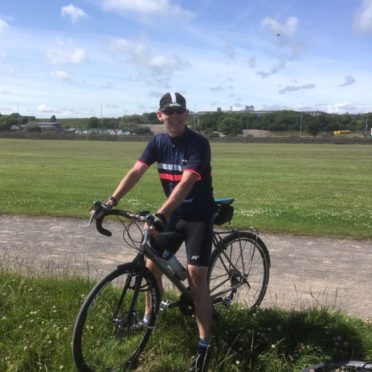Politicians and campaigners are urging the Scottish Government to do more to encourage children to walk and cycle to school.
New statistics from Sustrans show 44.8% of school children walk to school – however, this is lower than the number doing so in 2008.
The number of school children getting to school by bus also fell to a low of 14.1% in 2020.
Now a number of politicians and cycling campaigners say more should be done to make routes to school safer for those who want to walk or cycle to school.
‘The Scottish Government must do more to encourage active travel’
Monica Lennon, Scottish Labour’s spokeswoman for net zero, energy and transport, says urgent action is needed, including improving public transport and monitoring air pollution levels around schools.
She says not only will this keep children who walk or cycle to school safe, it will also reduce pollution levels.
Ms Lennon said: “More pupils walking to school is good news but it’s all too clear that the Scottish Government must do more to encourage active travel, cut emissions and keep children safe from pollution.
“Creating greener communities must be at the heart of our national recovery from Covid.
Creating greener communities must be at the heart of our national recovery from Covid.
“Alongside significant investment in safe active travel routes in rural and urban areas, Scotland needs a bus network that puts people and planet first.
“SNP ministers have the powers, and must act fast to promote healthy travel and cut harmful emissions.”
Look to Europe for good examples, says Green MSP
Maggie Chapman, Green MSP for the North East, uses the train and her bike to get to and from Holyrood.
She says the Scottish Government should take inspiration from European cities where walking and cycling is the norm.
Ms Chapman said: “I cycle to and from work and for leisure, but most of my miles are commuting miles.
“Some countries elsewhere have better infrastructure, road safety and lock-in facilities, as well as an automatic acceptance of bikes on public transport.
“When public transport is upgraded in Scotland there should be designated spaces for cycles, and there are plenty of good examples from across Europe where that is just expected because it is what is normal.
“I would like to see Scotland get to that point.
Air pollution is both an environmental and public health emergency. As part of the recovery from COVID-19 we must invest in our active travel infrastructure and public transport.
Let’s protect the environment and each other. #CleanAirDay pic.twitter.com/CnmaQ0I0xa
— Maggie Chapman MSP (@MaggieChapman) June 17, 2021
“Fundamentally it comes down to safety and the perception of safety.
“We know segregated cycle facilities are vital to help parents and guardians feel safe to let their children cycle alone or alongside them.
We know segregated cycle facilities are vital to help parents and guardians feel safe to let their children cycle.
“For example, if there are double yellow lines around a school, and then cars park on those lines, that doesn’t give parents any confidence in their children walking or cycling to school.
“Lowering speed limits in residential areas, especially around schools, is important and improving infrastructure, as well as thinking about other people’s safety all help.
“The Scottish Greens also want to see a re-prioritisation of road hierarchy, where pedestrians come first, and the cyclists, and then small vehicles, and so on.
“We need radical cultural change to make sure schools are safe and we would feel comfortable having our children walking and cycling there.”
Cycling forum supports calls to improve road safety around schools
Members of Dundee Cycling Forum have been campaigning for more children to walk or cycle to school since the group was set up in 2016.
Donald Baddon from the cycle forum said: “We need to have safer routes to school and better infrastructure.
“Some schools in Dundee are now cycle-friendly and there is no car drop-off at the school.
“But one example is Baldragon Academy where there is an advisory cycle lane, but people park on it.
“If it was made into a segregated cycle path cars wouldn’t park on it.
“But that creates a choice between kids being able to cycle to school safely and giving people a place to leave their car all day, and people get passionate about parking spaces.
“Another cycle is Blackford in Edinburgh where there is a cycle bus, which would be worth looking at too.
“We need to make the streets safer by banning cars or reducing traffic around schools.
We need to make the streets safer by banning cars or reducing traffic around schools.
“Many people picking up their kids will have their engines idling as well outside schools so if cars were not allowed that would cut pollution too.
“I totally support any move to make it easier for people to walk and cycle to school.
“It would improve pollution levels outside schools as well, which is also to be welcomed.”
Millions spent on improving active travel
A spokesman for Transport Scotland said: “The latest survey from Sustrans shows that rate of active travel to school is at its highest level in a decade, whilst private motorised travel to schools has decreased for the first time in four years.
If you’re travelling more, remember to keep up good habits and continue to walk, wheel or cycle where possible.
Choosing #ActiveTravel helps improve your health, wellbeing and the environment.https://t.co/nxkemsZUqU
— Transport Scotland (@transcotland) June 17, 2021
“We continue to invest record levels in active travel, with over half a billion pounds being invested over the next five years to support walking, wheeling and cycling infrastructure in addition to projects which make active travel choices easier.
We continue to invest in active travel, with over half a billion pounds being invested over the next five years to support walking, wheeling and cycling.
“The Scottish Government has also committed, within its first 100 days, to establish pilot projects which will deliver free bikes to children who cannot afford them.
“At the same time, over half a billion pounds in long-term investment is being provided, to deliver bus priority infrastructure and reduce the impact of congestion on bus services – making buses faster and more attractive to customers.”




